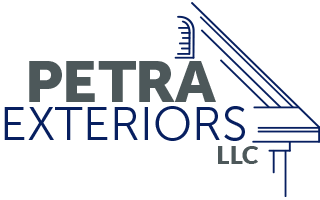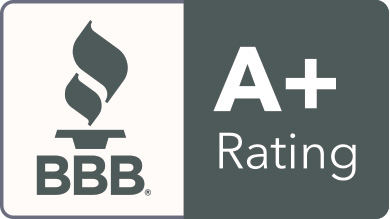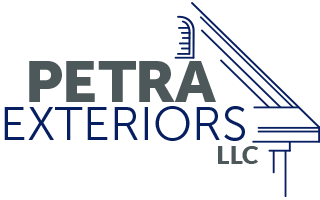Fiber Cement Siding
Smart Protection Meets Timeless Style
You ever glance at a neighbor’s house and think, “Dang, that just works”? That’s often fiber cement siding you’re looking at. It’s not showy. It’s not trendy. It’s the quietly confident kind of beautiful—equal parts muscle and charm. And around here in Middle Tennessee, it doesn’t just sit pretty. It stands guard.
What Is Fiber Cement Siding?
It’s a mash-up of grit and grace. A mix of cement, sand, and cellulose fibers that gets formed into siding boards tough enough to handle a tornado watch, a humid summer, and your kid’s soccer ball all in one week. Brands like James Hardie took this material and turned it into a whole design language—textures, widths, colors, styles—all baked in with Southern sense.
Unlike wood, it won’t curl up and quit after a wet season. Unlike vinyl, it won’t warp when the Tennessee sun decides to show off. It’s fire-resistant, bug-proof, hail-hardened, and it still somehow looks crisp on a Monday morning.
What Does Fiber Cement Siding Cost?
Breaking Down the Real-World Numbers
Most folks in the Nashville area spend between $6,500 and $21,000, depending on how big the house is and how fancy they want to get. That might sound like a spread, but think about it—every house has its quirks. Dormers. Gables. Wraparound porches. One-size-fits-all pricing just doesn’t fly.
On average, you’re looking at $5 to $14 per square foot. That includes the boards and the pros who know how to install them without wrecking your lawn or your timeline.
What Pushes the Price Up or Down?
- Old siding needs yanked off? Add labor.
- Want ColorPlus factory finish? Higher upfront cost, but fewer paint jobs down the line.
- Picking those artisan-thick boards or mixing styles? Looks amazing, costs more.
- Steep roofline, tricky corners, tall walls? Prep takes time. Time is money.
At Petra, we don’t mess around with vague quotes. You’ll see the full cost laid out clear as day before we swing a hammer.
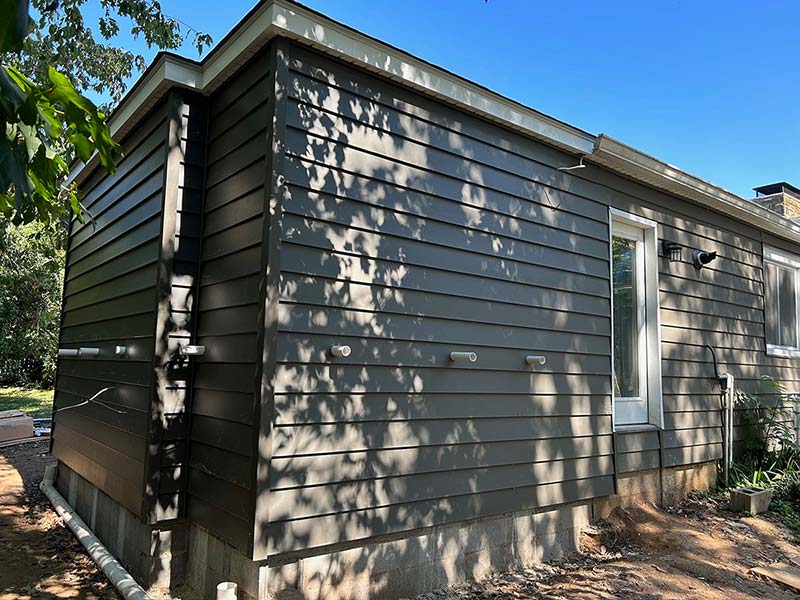
How Long Does Fiber Cement Siding Last?
Let’s Talk Longevity
This siding’s got staying power. You’re looking at 30 to 50 years of life when it’s installed right and kept clean. Rain doesn’t scare it. Fire doesn’t phase it. Insects won’t touch it. And it laughs in the face of woodpeckers.
The Resilience Rundown
- Moisture-resistant: Won’t swell, mold, or flake.
- Impact-tough: Handles hail and hard knocks.
- Pest-proof: No bugs, no birds, no burrowers.
- Fade-resistant: Especially if you go with baked-on ColorPlus hues.
And here’s the kicker—ROI averages around 77.6%, which is higher than almost any other exterior upgrade out there. Your home doesn’t just hold up. It holds value.
Why This Isn’t a DIY Job
Safety, Skill, and a Whole Lot of Precision
Fiber cement boards aren’t lightweight. They’re heavy, rigid, and prone to cracking if handled like drywall. And the dust that comes off them when cut? You do not want to breathe that in.
So yeah, you need pros. Our Petra crews use:
- Specialized saws with vacuums and filters
- Proper masks and gloves
- Precise measurements so seams line up, flashing protects, and the whole job weathers clean
Cut corners here and you’re asking for future repairs. Plus, a botched install can void your warranty. Ain’t worth it.
Fiber Cement vs Vinyl: A Side-by-Side That’s Not Even Close
Price Tag or Payback?
Yes, vinyl is cheaper at checkout. But give it a few summers and you’ll see the difference.
Vinyl melts in high heat. Cracks in cold snaps. Fades under sun. Bends under pressure. It lasts 20 to 30 years if treated kindly.
Fiber cement? It shrugs off all that and keeps going for up to 50 years. You paint less. Repair less. And your curb appeal? Immaculate.
That’s why fiber cement edges out vinyl in ROI—77.6% vs 74.7%. Not a blowout, but enough to matter when resale time rolls around.
Why Builders and Designers Swear By It
Aesthetic Range Without the Drama
Fiber cement gives you options. Want clean horizontal lap boards? Got it. Looking for vertical modern farmhouse lines? Easy. Prefer something textured like wood shake? No problem.
Add in ColorPlus hues that hold up to UV and weather, and you’ve got a product that lets your home stand out without screaming.
Even Southern Living featured it on their 2024 Idea House. That wasn’t just a design choice. It was about durability that still feels like home.
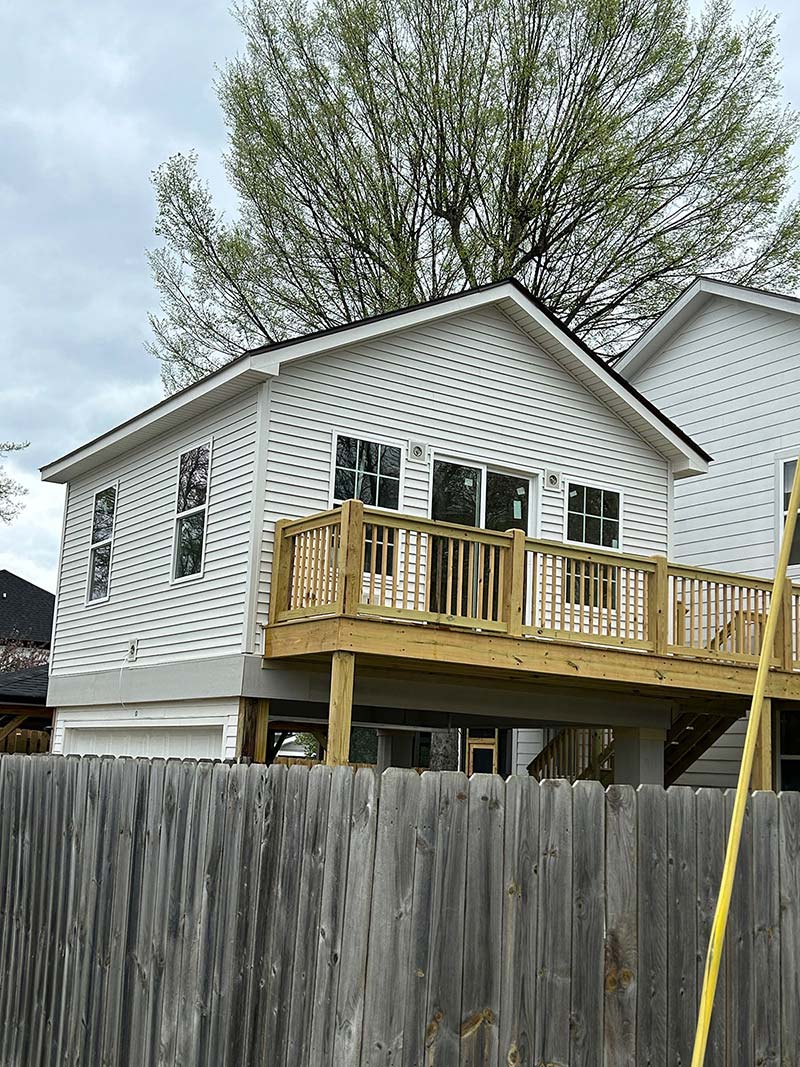
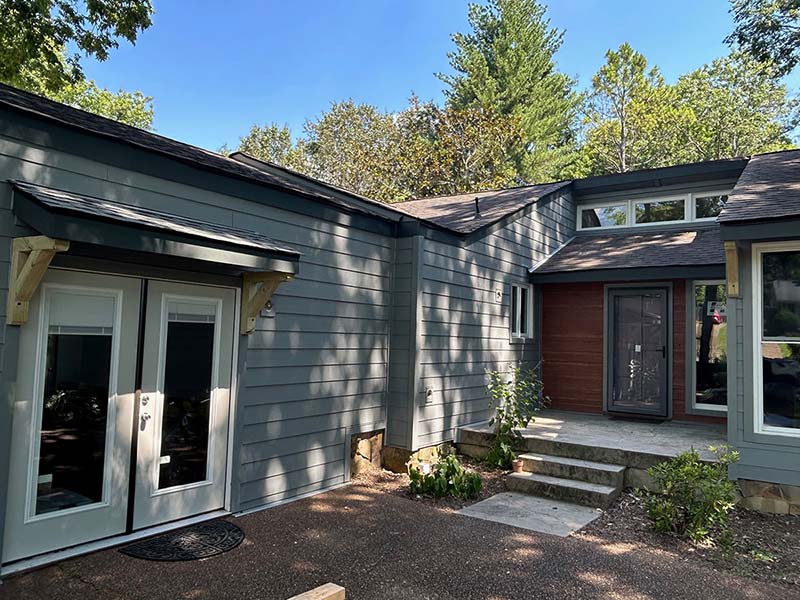
Built for Tennessee. Installed by Folks Who Live Here.
At Petra Exteriors, we’ve seen what Middle Tennessee weather does to siding. The sudden freeze-thaw cycles. The sideways spring storms. The weeks of relentless sun.
We’re not guessing. We’ve reroofed half the zip code and put siding on the other half. We know how to:
- Match historic trim in East Nashville
- Get HOA approval in Brentwood
- Beat humidity in Mt. Juliet
We don’t treat your house like a project. We treat it like a promise.
Ready to Make the Switch?
If you’re done with peeling paint, warping panels, and siding that gives up too early, let’s have a real conversation. No pressure. Just clarity.
We’ll show you:
- Samples you can touch
- Digital previews of what your house could look like
- A step-by-step timeline that makes sense
Call Petra Exteriors at (615) 510-4052
Fiber Cement Siding FAQs
How much does fiber cement siding actually cost in Middle Tennessee?
Most homeowners around here spend somewhere between $6,500 and $21,000 for a full fiber cement siding job, depending on house size, style choices, and whether we’re pulling off old siding first. On average, you’re looking at $5 to $14 per square foot, and that includes both materials and labor.
What makes fiber cement siding better than vinyl or wood?
In short? It lasts longer and holds up better. Fiber cement won’t melt in summer heat like vinyl or rot like wood in our humid seasons. It resists fire, pests, hail, and storm damage. Plus, it looks cleaner from the curb and usually needs way less maintenance over time.
Is fiber cement siding a good investment?
Definitely. You can expect a 77.6% return on investment at resale, which beats most exterior upgrades. And even if you’re not planning to move anytime soon, the lower upkeep and strong curb appeal make it worth every penny.
Can I install fiber cement siding myself?
Honestly? It’s not worth the risk. The boards are heavy, the cuts create silica dust that needs special safety gear, and a single misstep could void your warranty. Our crews are trained to install it exactly how the manufacturers recommend, so it lasts like it should.
What siding styles and colors can I get with fiber cement?
There’s something for every taste—lap siding, vertical panels, even shingle-style boards. As for colors, the ColorPlus line comes in dozens of baked-on shades that resist fading, or you can go custom if you want to match an HOA or personal palette. It’s flexible and future-proof.
Ready to Start Your Project?
You deserve a home that looks as solid as it feels. One that makes you proud. And one that you love every time you pull in your driveway.
So let’s chat. We’ll walk your property, talk about your vision, share some ideas—and see what your home could be.
